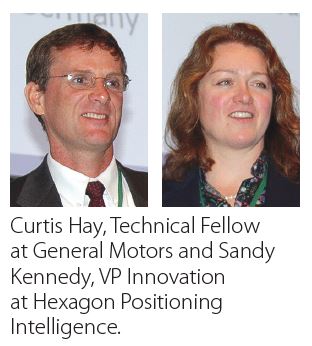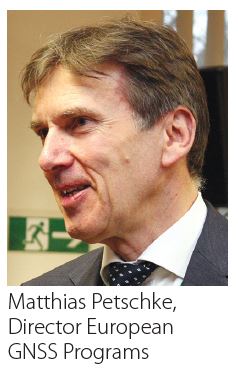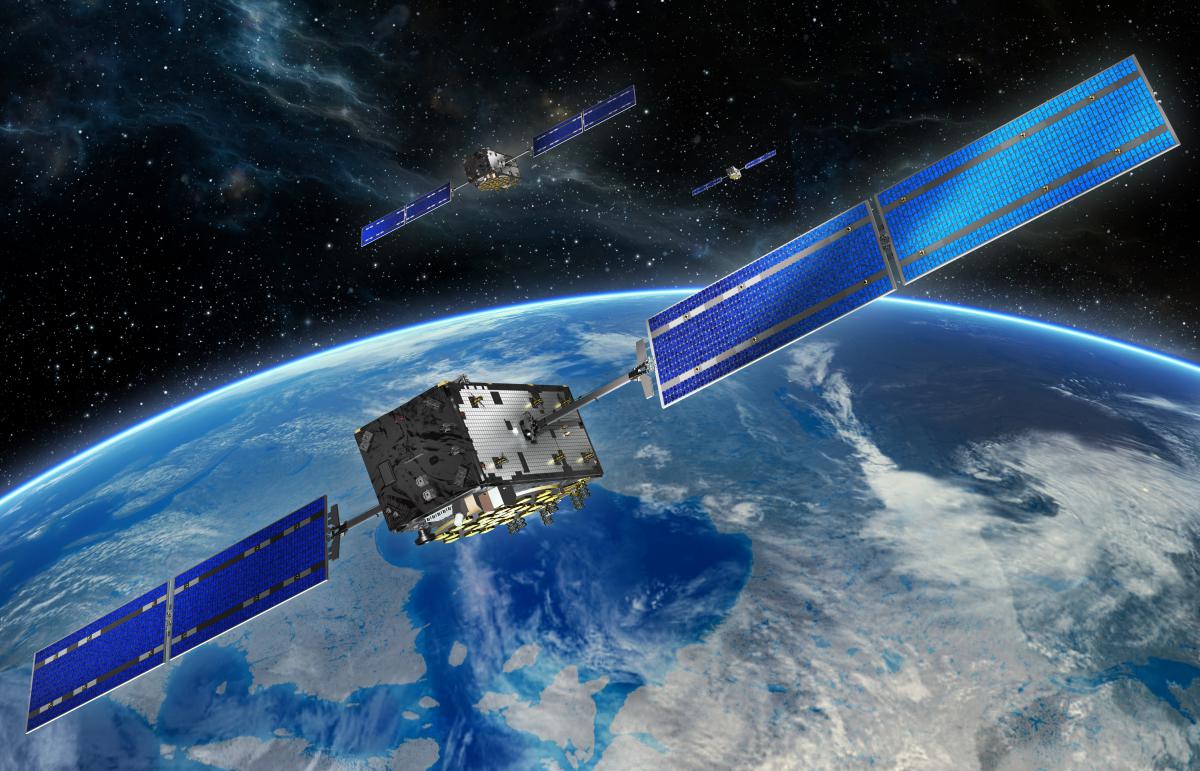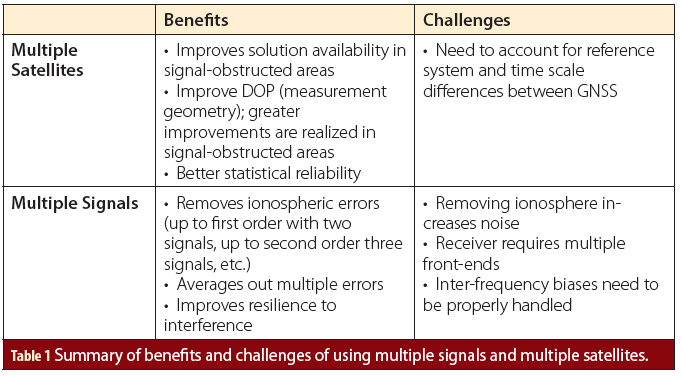All the heavy-hitters showed up in late March for the 2019 Munich Satellite Navigation Summit, from the U.S. government’s GPS crew to BeiDou, GLONASS and Galileo, flanked by up-and-coming regional players, including Japan, India and new kid on the block Korea. Without going into detail in terms of the actual state of advancement of the individual systems, suffice it to say that they all have impressive achievements to report and all are moving in a similar direction; hot topics for all and every GNSS, as expressed throughout the Summit, include higher and higher accuracy and precision, augmentation and correction services, dual-frequency GNSS, 5G connectivity and signal authentication.
Special notice was taken of the latest work on space service volume (SSV) revealing the possibility of lunar-distance GPS navigation. This important work was carried out by an international team within the framework of the United Nations’ International Committee on GNSS (ICG).
For users, all of these topics or aims really boil down to just one thing–a more precise, more robust, more available and more trustable positioning, navigation and timing (PNT) solution in the form of GNSS, enabling a whole new range of downstream technologies, applications, services and businesses.
Let Us Count the Ways
Those GNSS-enabled technologies, applications, services and businesses are many and varied. Speakers in Munich cited any number of them, depending on their own priorities and perspectives. For example, Matthias Petschke, Director European GNSS Programs, repeated what European officials have been saying more and more openly in recent months, that GNSS, and Europe’s civil-owned-and-run Galileo in particular, is now open to exploitation for security and defense applications. “Defense is becoming more and more relevant as we move into the future,” he said.
The idea itself will surprise no one, but a high-level official representing the Galileo Program saying it out loud would have been unthinkable just a few short years ago. We have already discussed this new trend that sees Europeans speaking more openly among themselves about GNSS for defense. Now we have Petschke referencing defense in a truly mixed forum that included, in his words, “our American friends.” Galileo is the only one of the major GNSS that was not created expressly to serve a military master.
David Comby, French Interministerial Coordinator Delegate for the European GNSS Programs, reminded everyone of the important GNSS-based, safety-critical applications, starting with the most obvious—civil aviation. “But others are coming,” he said, “including emergency services, and medical applications that will ultimately save thousands of lives.”
“Deep space and deep water are still weaknesses for GNSS,” said Jia Peng, Deputy Director, China Satellite Navigation Office. “In the next generation we will address these. It is still early, we are still framing concepts.” This fascinating tidbit will have set many an imagination working. It is certainly now within the realm of the conceivable, given the recent SSV results, to have GNSS signals being used for outward-looking, deep-space PNT applications. However, it is less clear just what Peng meant when he spoke about “deep water”. If a GNSS-based, deep-water solution is in fact achievable, then the quick and agile Chinese are as likely as anyone to get there first.

The Cars Are the Thing
Carlo des Dorides, Executive Director, European GNSS Agency (GSA), spoke the words everyone was waiting to hear: “Autonomous driving,” he said. “It is a growing interest, and GNSS is a key enabling system, along with cameras and other technologies.” Signal authentication, a service still promised by the EU’s Galileo program, is seen by many as a prerequisite for driverless mobility, des Dorides continued, providing much-needed assurance against the very real threat of spoofing. The GSA has put a lot of resources into getting Galileo into all variety of GNSS-dependant products, including automotive, and neither are they waiting around for full autonomy. “We already have eCall and eToll services in Europe based on GNSS. All European major car manufacturers are now working with the GSA,” he said. “GNSS is embedded within the standard car electronics and it is not there only for navigation.”
Everyone, it would seem, wants a piece of the driverless car. Pascale Ehrenfreund, chair of the Executive Board at DLR, outlined her organization’s deep dive into autonomous driving, stressing important roles to be played by artificial intelligence (AI) and machine learning, but, “Bringing all of the advanced technologies and algorithm-based innovations together is a major task,” she warned.
The Russians are also keeping their eyes on the driverless prize. Oleg Kem, Director of the Department of Navigation Space Systems (GLONASS), ROSCOSMOS State Corporation, spoke about his country’s interest in unmanned driving. “Prime Minister Dmitry Medvedev has recently weighed in on this hot issue,” Kem said, confirming the importance and popularity of this topic at all levels, from the highest political right down to the man or woman in the street. “We know of at least seven Russian companies now running pilot studies of new driverless road vehicles,” he said, “and there are more than 30 prototype vehicles being tested using GPS and GLONASS-based systems.”
The Unspeakable
And then there is that word, the one that sets ears burning, the mere pronunciation of which draws titters, huffing and puffing, rustling of affairs and bodily shifting. The reality of the much-speculated-upon event is truly nigh.
The EU’s Petschke said, “About BREXIT–there will be effects felt in all domains. GNSS is only one among many, but there will be no catastrophic effect for us. The UK, like everyone, will have access to the Galileo open signal. It is a free and open service. As for the PRS, which is restricted to EU member States and third countries that have negotiated access, everyone knows we are negotiating with the U.S. and Norway. So, after the divorce, the next step would be to establish the future common relationship with the UK, and any PRS agreement would be in this context.”
In the Galileo security domain, he said, the story is a little different. “The Galileo Security Monitoring Center, which was to be based in the UK, has already been moved back to the continent,” he stated. So there’s no issue there.
Petschke did not speak to the question of UK investment in the program itself, nor to the question of UK contractors and suppliers. Some light was shed earlier this year by the unflappable European Space Agency (ESA) Director General Jan Woerner, for whom it seems to be getting harder and harder to stay out of the Brexit dust-up, try as he might. “From the beginning,” he said, “what I clearly stated was that whatever the referendum said, the UK will remain an ESA member state. And this is good. We have no intention at all to reduce our activities with the UK. Concerning contracts that are right now signed, they will of course be done. There is some discussion about what happens with Galileo, or other projects, wherever it involves EU money. On the other hand, with our ESA money, we don’t see any border between here and the UK.”
Des Dorides put it even more simply: “There are lots of dimensions here. Galileo has continued to move forward. We don’t know the result of BREXIT for the world, but our users won’t suffer. Galileo won’t suffer marketwise.”
And just so no one imagines that everyone at the show was bonnie for BREXIT, we refer readers to the presentation, at the “Legal Aspects” session, of Prof. Dr. Lesley Jane Smith of Leuphana University, during which the words “chaos”, “confusion” and “shambles” were delivered repeatedly and with appropriate feeling.

More Car Talk
European politics aside, there was plenty of exchange of ideas of the nuts-and-bolts kind going on in Munich. Automated road transport continued to draw attention throughout the event, as it now draws ours.
Curtis Hay, Technical Fellow at General Motors, said, “GM is really evolving into a transportation services company, not just a carmaker. We’re looking at electric engines, talking about zero-accident and zero-congestion targets.”
Hay presented the new Cadillac CT6 with SuperCruise. “This is a Level-II automated vehicle,” he said. “We see the map as a critical sensor, and we have precise GNSS down to 90cm using single-frequency. Now 90cm might not sound so precise, but when we compliment it with sensors, this is good enough for what we need.”
Earlier at the event, Petschke had commented on the recent U.S. Federal Communications Commission (FCC) decision to allow in U.S. radio space the Galileo E1 and E5 signals, which overlap with U.S. GPS signals. That approval means that those signals will be protected from future interference when requests to use spectrum in other ways come before the Commission.
The original request was for approval of the Galileo E1, E5 and E6 signals, but the FCC declined to approve the E6 signal. “The FCC decision helps to close the gap for Galileo in the American market,” Petschke said in Munich. “But we are disappointed about the E6 denial. It is the U.S. that will ultimately lose out.”
Back to Hay, we know that he and GM are very interested in dual-frequency GNSS, and would like to be able to move in that direction, with the help of the FCC. Hay said, “Unlike some other makers, and I don’t want to name any names–Tesla–we at GM believe in GNSS. We want to see and use correction services like Trimble RTX and others. We want multi-frequency and multi-constellation. We want authentication. When you see everything that’s out there, this is a great time to be an automaker. This is a great time to innovate.”
Joining Hay at the automated driving session was Sandy Kennedy, VP Innovation at Hexagon Positioning Intelligence. She talked about moving towards common performance standards. “Collaborating, sharing, coordinating means we need a common language, and that can start with absolute positioning. GNSS gives you that. It is that absolute context. It is not perfect, but it is essential,” she said.
Hexagon Positioning Intelligence is another key player providing enhanced hardware, correction services and advanced algorithms, building on its experience in the aviation sector and slotting nicely into automated driving.
Like Hay, Kennedy sees dual-frequency GNSS as an enabler. “The Hexagon concept includes four key elements: a good multi-frequency and multi-constellation GNSS chipset, with inertial measurement; a good solid antenna with predictable performance; a state-of-the-art corrections network delivering convergence to less than one meter; and a functional safety concept backed by the most intelligent and efficient software available.”
Cities Getting Smarter
Smart cities use information and communications technologies to increase efficiency, share information with the public and to improve the quality of key services such as public transport. Advances in GNSS-based technologies are enabling better and more competitive services across the board, while minimizing negative environmental and social impacts. On the communications and connectivity side, 5G represents the latest generation of cellular mobile communications and is set to make a big splash, delivering ultra-wide bandwidth and massive input and output capabilities.
Speaking at the “Smart Cities” session, Roberto Prieto-Cerdeira, GNSS Evolutions Principal Engineer at ESA, said, “5G is going to enable a large number of mission-critical services, in health, autonomous drones, massive internet of things (IoT). It can deliver high-accuracy GNSS corrections through the network. Of course that will depend on the availability of the 5G network. GNSS is global, so there will be some weaknesses for 5G, but then we have the strength of 5G which is indoor positioning, because there GNSS does not work.”
Hybrid PNT, using both GNSS and 5G, and any other available tools, Prieto said, is the next big step forward: “At ESA, we are working with many partners–GMV, DLR, u-blox, NovAtel and others, doing field testing, etcetera. There is plenty of room and a need for GNSS, but be aware of other technologies that we need to work with in hybridization scenarios.”
Words of wisdom from the ESA man. Clearly, there is a lot still to be done in terms of PNT innovation, with GNSS technologies at the core. The GNSS community has been working very hard and coming together in cooperative initiatives. Assets are being deployed in increasing numbers and the resulting services are being delivered more and more widely, enabling a revolution in how we live and do business. Judging by the quality and breadth of the discussions that took place at the Munich Satellite Navigation Summit, of which the current summary stands as a pale reflection, the effort seems to be paying off.

Peter Gutierrez, Inside GNSS’s European correspondent, is a senior reporter and editor based in Brussels, Belgium, who has written about Europe’s GNSS programs for many years. He received his bachelor’s degree from the University of Texas at Austin and a M.S. degree from the University of Massachusetts at Amherst.






